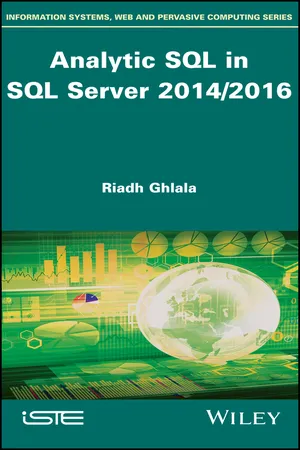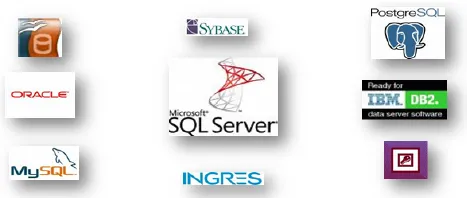
- English
- ePUB (mobile friendly)
- Available on iOS & Android
Analytic SQL in SQL Server 2014/2016
About This Book
Business Intelligence (BI) has emerged as a field which seeks to support managers in decision-making. It encompasses the techniques, methods and tools for conducting analytically-based IT solutions, which are referred to as OLAP (OnLine Analytical Processing). Within this field, SQL has a role as a leader and is continuously evolving to cover both transactional and analytical data management. This book discusses the functions provided by Microsoft® SQL Server 2014/2016 in terms of business intelligence. The analytic functions are considered as an enrichment of the SQL language. They combine a series of practical functions to answer complex analysis requests with all the simplicity, elegance and acquired performance of the SQL language. Drawing on the wide experience of the author in teaching and research, as well as insights from contacts in the industry, this book focuses on the issues and difficulties faced by academics (students and teachers) and professionals engaged in data analysis with the SQL Server 2014/2016 database management system.
Frequently asked questions
Information
1
Data Analysis Fundamentals with the SQL Language
1.1. Data at the heart of the information system
1.1.1. Introduction

1.1.2. Mind map of the first section
1.1.3. Concept of a database


1.1.4. Database Management System (DBMS)


1.1.5. The relational model
Table of contents
- Cover
- Table of Contents
- Introduction
- 1 Data Analysis Fundamentals with the SQL Language
- 2 Queries
- 3 Operators
- 4 Functions